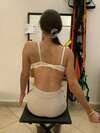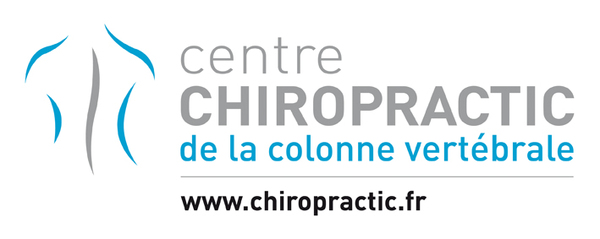The diagnosis of scoliosis in adulthood can be daunting and destabilizing. Many patients wonder "how did this happen?", and rightly so, what the future holds and whether the condition is treatable.
Understanding the phenomenon, its evolution and treatment options should provide you with the clarity you need to better orient yourself.
Scoliosis beyond the growth period
Although scoliosis is often associated with children and adolescents, it can also affect adults.
In fact, the prevalence of scoliosis increases with age. For example, while up to 5%[1] of teenagers suffer from idiopathic scoliosis, this figure rises considerably in older adults. It is estimated that up to 68% of adults between the ages of 60 and 90 will suffer from adult scoliosis[2].
This increase is due both to the progression of scoliosis from adolescence to adulthood, and to the onset of degenerative scoliosis.
2 types of adult scoliosis
Adolescent scoliosis in adults (ASA)
Adolescent to adult scoliosis (ASA) refers to cases where scoliosis, usually diagnosed during adolescence, persists or progresses into adulthood. This pre-existing condition may have been identified in youth, but in some cases individuals may not have been diagnosed until later in life. The progression of ASA varies, with some cases remaining stable while others may worsen over time, depending on various factors such as age, lifestyle and general state of health.
De novo degenerative scoliosis (DDS)
Degenerative scoliosis, also known as de novo scoliosis, results from degeneration of the spine associated with aging. It generally affects people over the age of 45, and becomes increasingly common in women as they approach menopause. Unlike ASA, DDS is generally progressive and can frequently lead to back pain due to degenerative instability.
Symptoms of scoliosis in adults
The symptoms of scoliosis in adults differ considerably from those in adolescents. While children with scoliosis often feel no pain, adults generally experience pain caused by compression and instability of the spine (buckling). Common symptoms include :
1:Back pain in the lower and middle spine.
2:Changes in postural alignment/slouching, including forward tilt or sideways slouching.
3:Significant loss of height when standing or sitting.
4:Balance problems
5:Impact on flexibility, ease of movement and therefore overall quality of life.
These symptoms may coexist with other clinical factors such as a history of surgery, a family history of scoliosis, menopause or a diagnosis of osteopenia/osteoporosis, all of which can have an aggravating effect on the development of de novo scoliosis.
The importance of early treatment
Many de novo scoliosis patients focus solely on pain relief, which of course I understand. However, it's essential to treat the cause, such as the postural deviation associated with de novo scoliosis. Untreated scoliosis can lead to increased pain, further degeneration of the spine and more invasive treatment options in the future, such as surgery. Early, proactive management can significantly improve your quality of life and well-being;
Your treatment options
There are various treatment options for adult patients with scoliosis, focusing primarily on stabilization, pain relief and improving spinal balance.
Customized corset: wearing a customized 3D corset can help support the spine, realign posture, slow or halt progression, reduce pain and improve quality of life. In some cases, adults may only need to wear the corset part-time each day.
Rehabilitation with self-corrective exercises: scoliosis-specific exercise programs, such as ScoliBalance®, focus on improving spinal balance, stabilizing the spine and reducing pain. Rehabilitation can be used in combination with a corset for optimal results.

Take control of your scoliosis and your health
With so much information online, the diagnosis of scoliosis can seem overwhelming. But don't give up hope.
Adopt a proactive approach to avoid further vertebral degeneration, potentially reducing the need for subsequent invasive treatments.
If you notice any changes in yourself or a loved one, don't wait for symptoms to worsen. Take action today and contact our team so we can help you on your way.
You can also send me an e-mail with your questions to
References
1. Weinstein S, Dolan, LA., Cheng, JC., Danielsson, A., Morcuende, JA. (2008) Adolescent idiopathic scoliosis. Lancet 371:1527-1537 | Weinstein S, Zavala DC., Ponseti IV. (1983) Idiopathic scoliosis: long-term follow-up and prognosis in untreated patients. . Journal of Bone and Joint Surgery Am 63:702-712 | Weinstein S (1986) Idiopathic scoliosis. Natural history . Spine (Phila Pa 1976) 11:780-783 | Weinstein S, Dolan, L, Spratt, K., Peterson, K., Spoonamore, M., and Ponseti, I. (2003) Health and function of patients with untreated idiopathic scoliosis: A 50-year natural history study. JAMA 289:559-567. doi: doi:10.1001/jama.289.5.559 | Asher MA, Burton DC (2006) Adolescent idiopathic scoliosis: Natural history and long term treatment effects. Scoliosis 1:2-2. doi: 10.1186/1748-7161-1-2
2. McAviney J, Roberts C, Sullivan B, Alevras AJ, Graham PL, Brown BT. The prevalence of adult de novo scoliosis: A systematic review and meta-analysis. Eur Spine J. 2020 Dec;29(12):2960-2969. doi: 10.1007/s00586-020-06453-0. Epub 2020 May 22. PMID: 32440771. | Schwab F, Dubey A, Gamez L, El Fegoun AB, Hwang K, Pagala M, Farcy JP (2005) Adult scoliosis: prevalence, SF-36, and nutritional parameters in an elderly volunteer population. Spine 30(9):1082-1085
